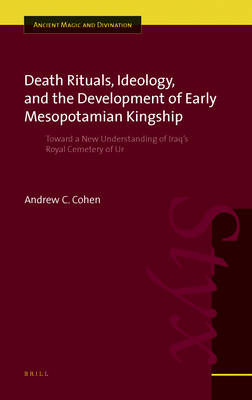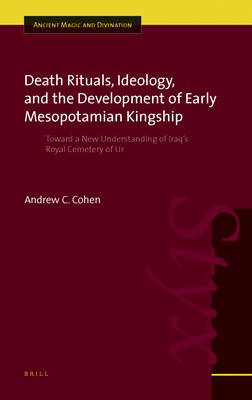
- Afhalen na 1 uur in een winkel met voorraad
- Gratis thuislevering in België vanaf € 30
- Ruim aanbod met 7 miljoen producten
- Afhalen na 1 uur in een winkel met voorraad
- Gratis thuislevering in België vanaf € 30
- Ruim aanbod met 7 miljoen producten
Zoeken
Death Rituals, Ideology, and the Development of Early Mesopotamian Kingship
Toward a New Understanding of Iraq's Royal Cemetery of Ur
Andrew C Cohen
€ 387,95
+ 775 punten
Omschrijving
At the beginning of Mesopotamia's Early Dynastic period, the political landscape was dominated by temple administrators, but by the end of the period, rulers whose titles we translate as "king" assumed control. This book argues that the ritual process of mourning, burying, and venerating dead elites contributed to this change. Part one introduces the rationale for seeing rituals as a means of giving material form to ideology and, hence, structuring overall power relations. Part two presents archaeological and textual evidence for the death rituals. Part three interprets symbolic objects found in the Royal Cemetery of Ur, showing they reflect ideological doctrines promoting the office of kingship. This book will be particularly useful for scholars of Mesopotamian archaeology and history.
Specificaties
Betrokkenen
- Auteur(s):
- Uitgeverij:
Inhoud
- Aantal bladzijden:
- 268
- Taal:
- Engels
- Reeks:
- Reeksnummer:
- nr. 7
Eigenschappen
- Productcode (EAN):
- 9789004146358
- Verschijningsdatum:
- 1/10/2005
- Uitvoering:
- Hardcover
- Formaat:
- Ongenaaid / garenloos gebonden
- Afmetingen:
- 165 mm x 241 mm
- Gewicht:
- 566 g

Alleen bij Standaard Boekhandel
+ 775 punten op je klantenkaart van Standaard Boekhandel
Beoordelingen
We publiceren alleen reviews die voldoen aan de voorwaarden voor reviews. Bekijk onze voorwaarden voor reviews.











